



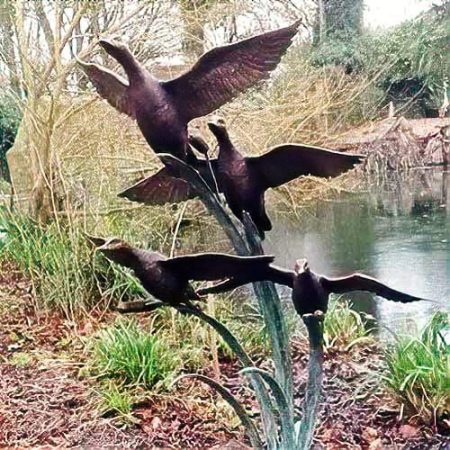



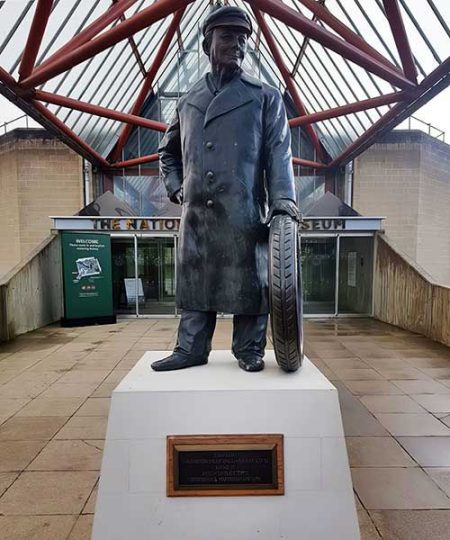







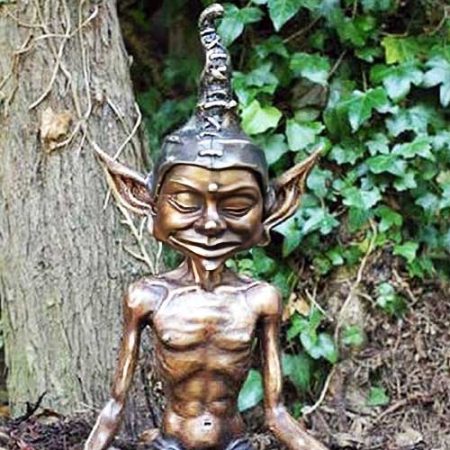

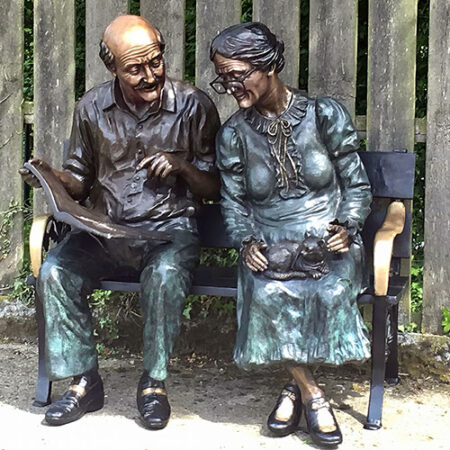
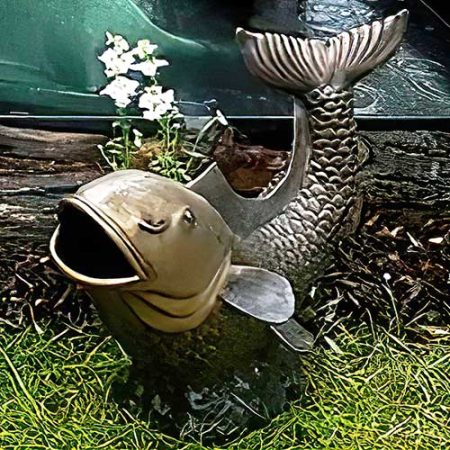
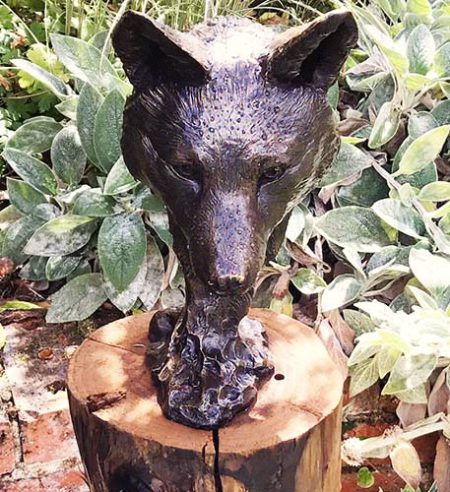

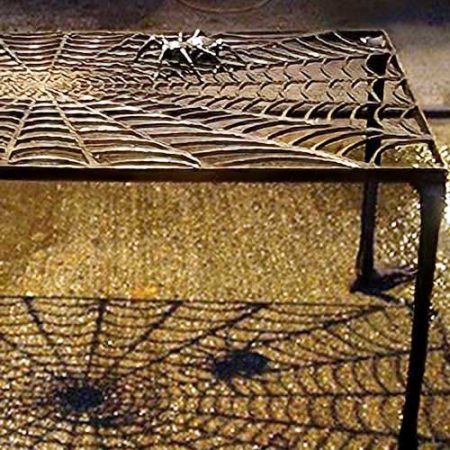


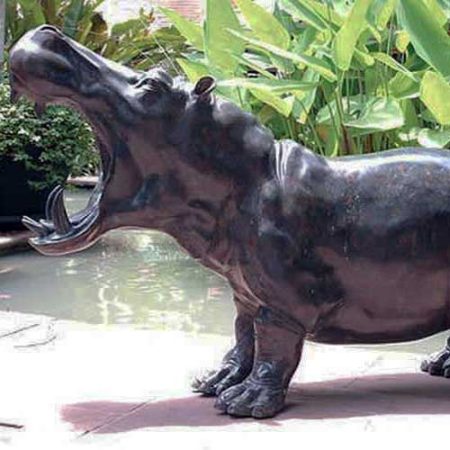

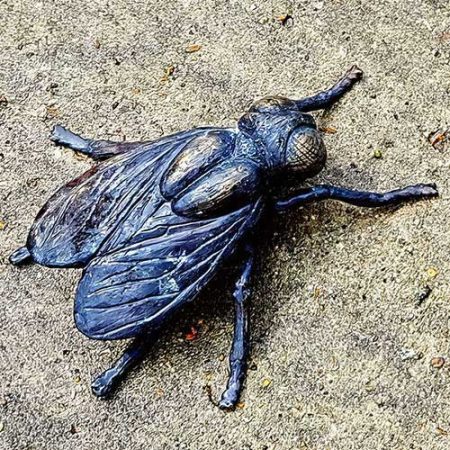

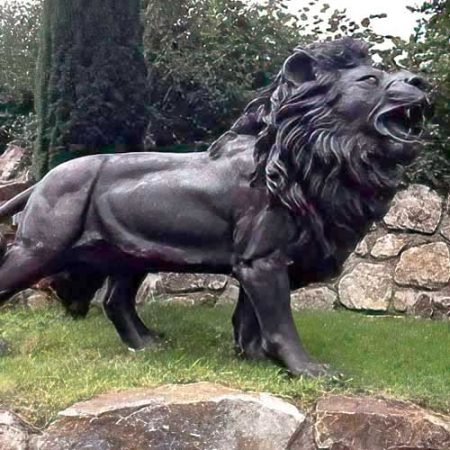

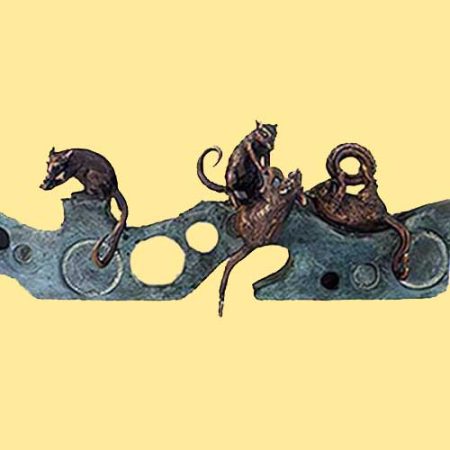



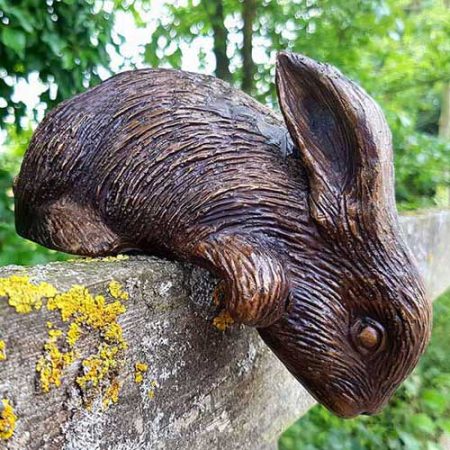
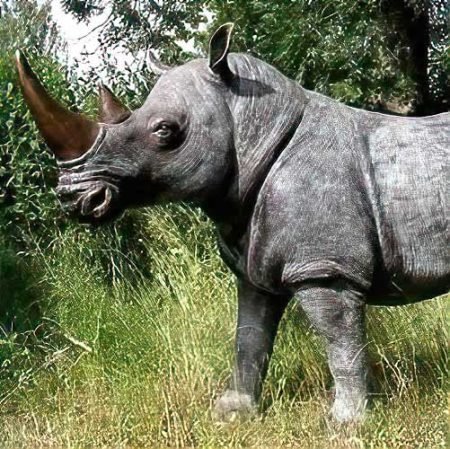
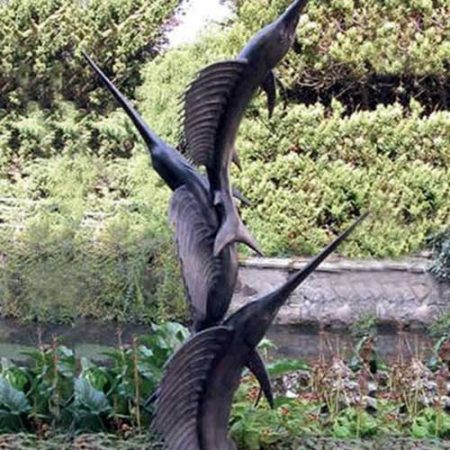

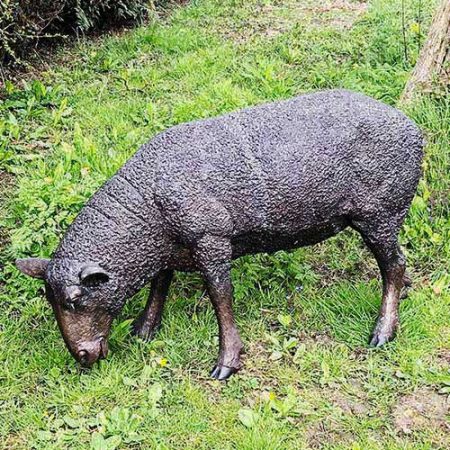

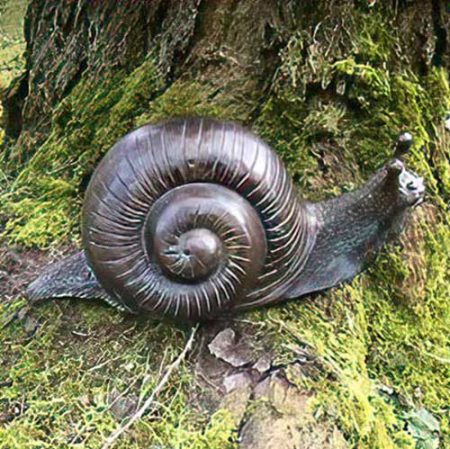
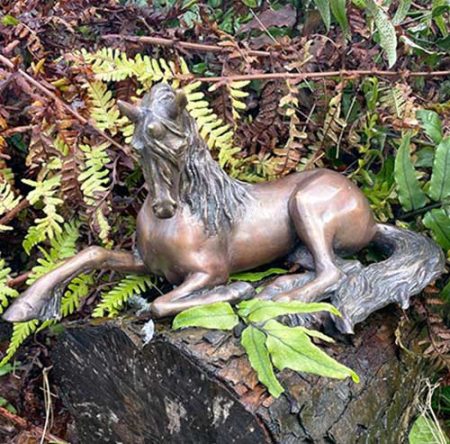

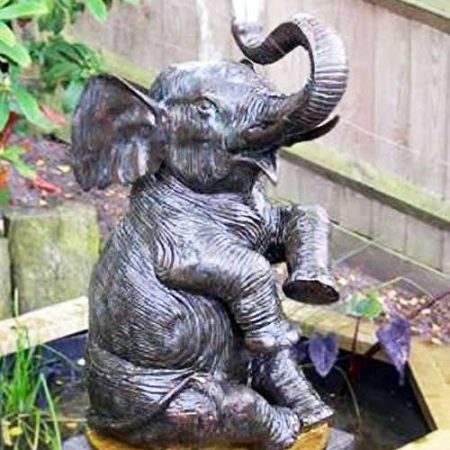
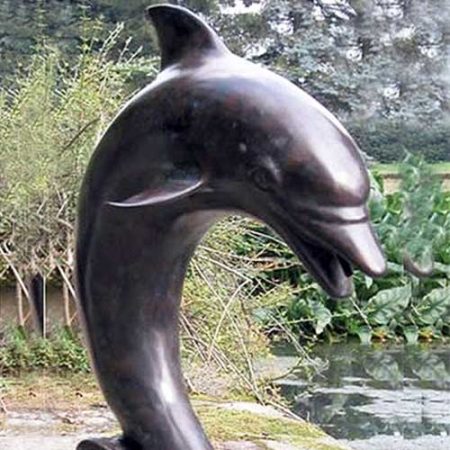


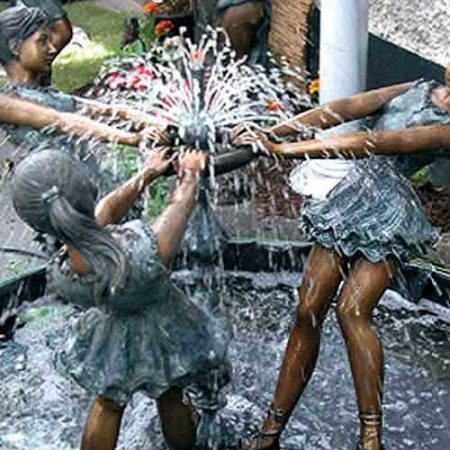
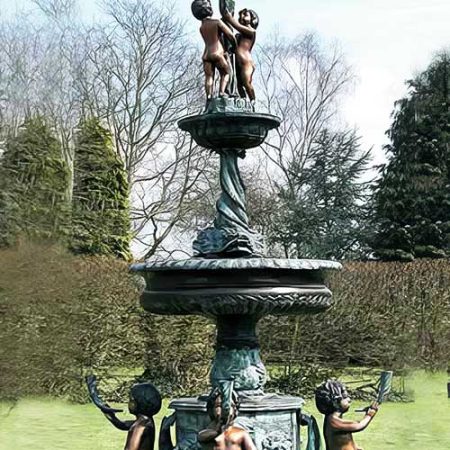
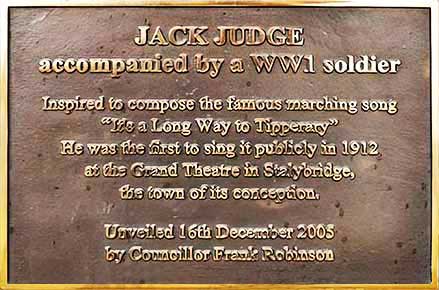
The statue of Jack Judge was the fourth of six commissioned bronze sculptures produced by Escar UK Bronze for Greater Manchester Council, located in the North of England
This fine hollow cast bronze statue depicts Jack sitting on a granite rock studying the Tipperary Song Sheet, whilst a First World War soldier leans over his shoulder and plays it on his mouth organ
Jack Judge the Tipperary Man is sited in Lord Pendry Square in Stalybridge, Tameside, Greater Manchester outside the newly renovated Stalybridge Town Hall, a mere few hundred yards away from what was once the Grand Theatre

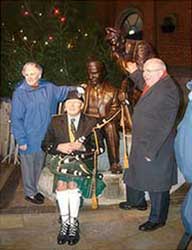
The statue was unveiled on the 16th December, 2005 by Councilor Frank Robinson while the local brass band, the oldest in the world, did the honours
Fittingly, several members of the Judge family were also in attendance to honour him
The plaque is carefully phrased to sidestep controversy by stating that the song was conceived in Stalybridge, rather than composed there as is widely believed
This wording is used because many people contest this claim, asserting instead that the song was written in his hometown of Oldbury
Jack Judge, born in 1872 in Oldbury, Worcestershire, England is best remembered as the composer of the iconic World War One song, ‘It’s a Long Way to Tipperary’
Jack’s family hailed from County Mayo and in 1909 he wrote ‘It’s a Long Way to Connemara,’ tapping into the popularity of sentimental Irish ballads among emigrants longing for home
Despite his humble beginnings, Judge’s talent for creating memorable tunes set him apart.
Jack, a consummate performer with a perfect voice for music hall, began supplementing his main income as a fish seller by taking to the stage in order to support his growing family
He made his debut in 1909 at a variety concert in Birmingham with the song ‘John Bull’s Cold’ and despite his humble beginnings, Judge’s talent for creating memorable tunes set him apart and at 38 he found great success, performing at major music halls as well as distributing sheet music to retailers
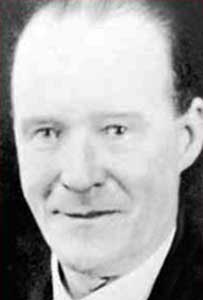

The story behind “It’s a Long Way to Tipperary” is both legendary and serendipitous, highlighting Jack’s talent and quick wit
In January 1912, after a performance at the Grand Theatre in Stalybridge Cheshire, a fellow artist bet Jack he couldn’t write and perform a new song within 24 hours
Rising to the occasion Jack adapted his unpublished song ‘Connemara’, changing the title to ‘It’s a Long Way to Tipperary’
He composed the new version overnight, performed it the next day and very quickly its catchy melody & heartfelt lyrics resonated with audiences and it caught on, solidifying its place in music history
‘It’s a long way to Tipperary’ is a Music Hall and Marching Song written by Jack Judge in 1912
It’s a long way to Tipperary,
It’s a long way to go,
It’s a long way to Tipperary,
To the sweetest girl I know!
The well known chorus is:
Goodbye Piccadilly,
Farewell Leicester Square,
It’s a long long way to Tipperary,
But my heart’s right there!
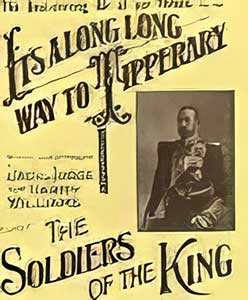

Jack penned dozens of music hall songs, with his first major hit being ‘How Are Yer?’ in 1912
Other popular songs included ‘Michael O’Leary’
‘Paddy Maloney’s Aeroplane’
‘Sing a Song’
‘The Magic of Cremalt’
‘The Way the Wind Blows’ and ‘When the Band Begins to Play’
But despite his many compositions, unfortunately none managed to achieve the same level of fame as ‘It’s a Long Way to Tipperary’
As World War One unfolded, ‘It’s a Long Way to Tipperary’ was adopted by British soldiers as a marching song
Its themes of homesickness and hope struck a chord with the troops and the song spread rapidly throughout the ranks, instantly becoming an international hit
On August 13th 1914, George Curnock of the Daily Mail, while on holiday in Boulogne, observed the British Expeditionary Force landing in France
He noted that familiar tunes like ‘Soldiers of the Queen’ and ‘Dolly Grey’ were also followed by a new poignant song, sung by Irish voices
Curnock’s report on the ‘Tipperary’ song was cabled worldwide, people everywhere embraced it and the song became an anthem for British soldiers during the war, symbolising the resilience of those stationed on the front lines despite their longing for home
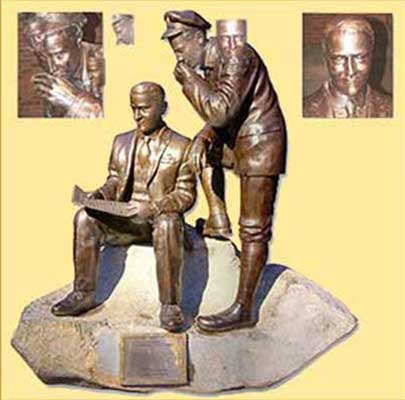
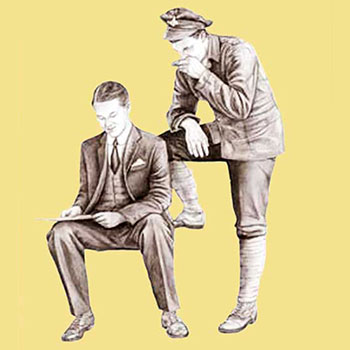
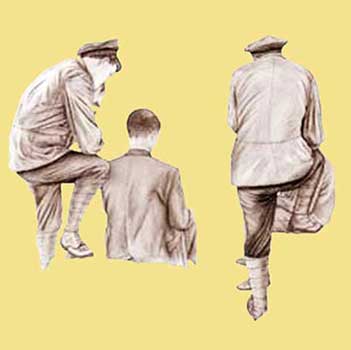
Wikipedia -:- For more info on Lost Wax Casting -:- The Crucible
Hollow Cast Bronze Statues UK -:- Hollow Cast Bronze Sculptures UK